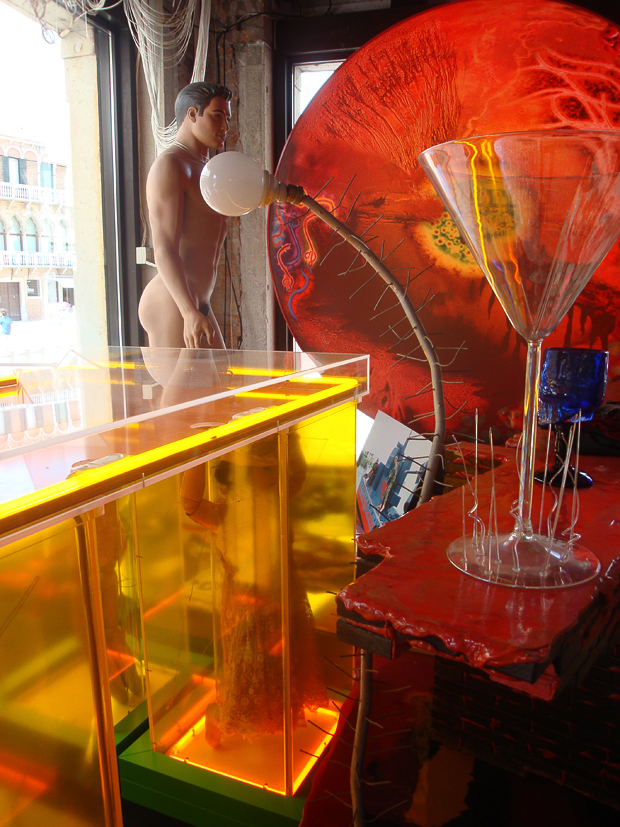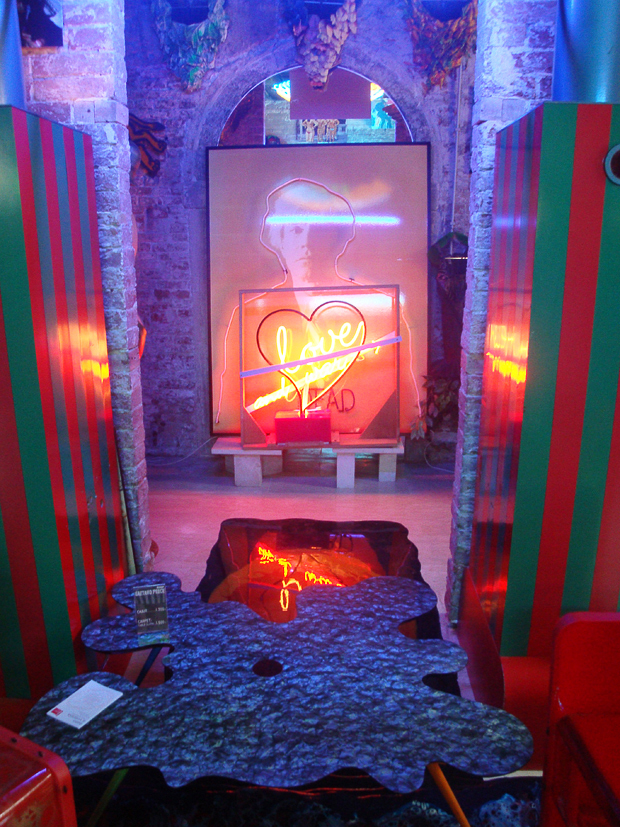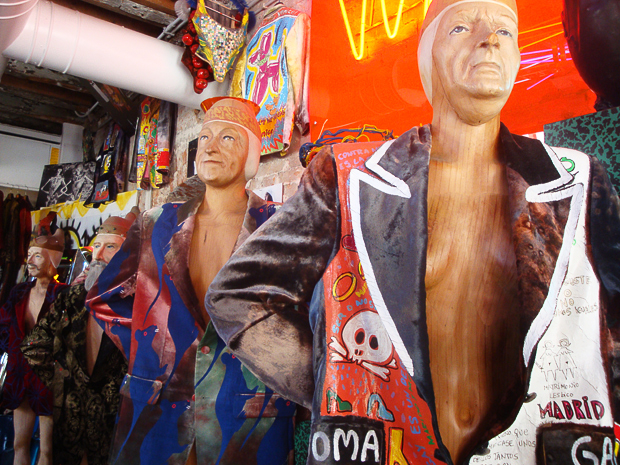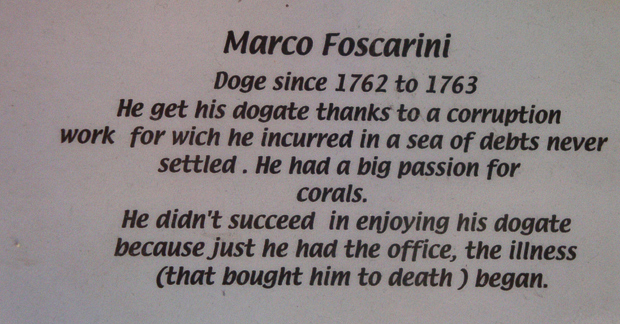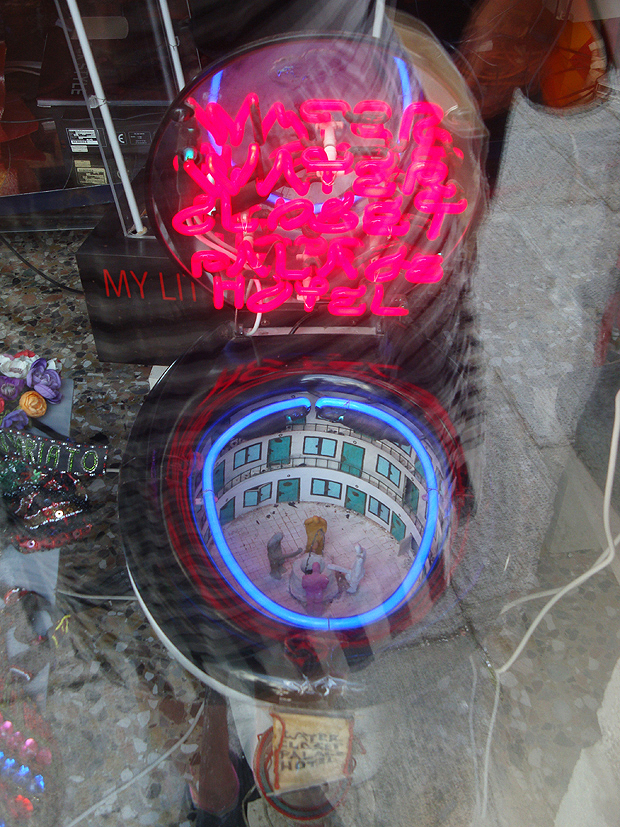Navigating cultural complexity at work
Working in a team with leaders that acknowledge differences is like coming to an oasis after a lifetime of being in the desert. You can create this workplace oasis if you know how to navigate cultural complexity as a leader. Check out some practical tips
Working in a team with leaders that acknowledge differences is like coming to an oasis after a lifetime of being in the desert. You can create this workplace oasis if you know how to navigate cultural complexity as a leader
As a design manager I have managed teams across India, Japan, Australia, Europe and North America and I’ve also had the privilege of living across Asia, Africa, US and the UK. This makes me a bridge person - someone who is a bridge between cultures. And uniquely qualified to share my learnings and tips on how to navigate our differences. I hope this guide helps you and inspires you
This is a long form visual essay. You can jump to the sections below or just scroll to read:
Cultural differences are not so simple
So much information on cultural differences is overly simplistic and limited. One of the biggest mistakes leaders make is thinking it’s easy. This hubris is the beginning of bad policies. Here are some excerpts from the official corporate training I was given on how to interact with our American colleagues when we visited the US for work:
Strong smells are offensive to Americans. Make sure to avoid disturbing your western colleagues at lunch time
A meeting scheduled at 9AM starts at 9AM. Be there 5 mins early.
Don’t use the company’s phones to call your parents back home in India
Wow, so many assumptions to unpack here. This is what we were told as Indians visiting America for the first time for work.
I have a few more examples of overly simplistic cultural differences I want to call out.
They say that culture is binary (it’s not)
One culture is egalitarian and one culture is hierarchical
One culture thinks time is relative and the other culture thinks time is money
One culture is “free” and the other is “traditional”
One culture has small egos and in another culture everyone has big egos
But culture is not so binary!
Our cultural differences are rich, complex
These differences are difficult to decipher. This is okay. Let’s take the example of eating on a video call at work. One day I asked:
What’s everyones opinion on eating on a video call?
We were a group of people who worked together for a long time. And we were all surprised and curious by each others answers. Some folks were just not comfortable eating with their camera on, some thought it was too informal for work, some were practical and said better to get it over with if you’re having a busy day. Others were totally comfortable with it and hadn’t thought twice about it
acknowledge cultural differences
Acknowledging our differences is important. Celebrate them!
Working in a team with leaders that acknowledge differences is like coming to an oasis after a lifetime of being in the desert
Cultural differences are not a problem
What I’m getting at is that cultural complexity is not a problem to be solved. It’s a world we need to navigate.
When we switched to a digital first world during the pandemic everyone focussed on how to optimize remote work. They told us to overcommunicate, focus on work/life balance and we even tried to come up with new ways to have fun as a team. We discussed the new digital etiquette in meetings. For e.g. is it okay to eat on a video call.
When we add cultural complexity to a digital, remote world everything becomes even more layered. Earlier everyone left their home behind and came to a common space, The Office. In the office they absorbed office culture. This made it easier to communicate across cultures. However working from home means we were all in our homes, full of our families, our pets, language and food. We are embedded in our cultures when we work from home
Everyone is different - this was always true. However our differences become more visible in remote work. Some of us are caregivers, some of us have loud construction noises in the background. Others have kids, pets, parents, family needs, some are alone at home, some are in big houses with huge backyards and others in small apartments in big cities. Some want to eat hot food for lunch and others don’t mind a cold sandwich. Some can do flexible timings while others have to stick to strict schedules
In this situation it becomes more important than ever to bridge the gap
Bridge the gap to create a workplace oasis
When you do this you create an oasis. A space for everyone to be different and yet welcomed, a safe space.
A space where trust batteries are charged up to the maximum. More, better ideas are generated and people are more productive. The best ideas come from diverse teams that get along very well and work together for a long time. When you can navigate across cultures, celebrate differences and bridge the gaps - you create a workplace that encourages creativity and idea generation
To summarise:
Cultural differences are complex, not simple. In the media and everywhere we often limit cultural differences to oversimplified tropes.
I want to convince you that we should acknowledge and even celebrate cultural complexity. It’s not a problem to be solved
When we learn to navigate cultural complexity we create an oasis for creative people where more, better ideas are generated, faster
Okay so how do we create this idealistic oasis full of ideas!
Here are some tips to become a bridge person or...
How to bridge the gap
Being a bridge person is a bit like being a chameleon. I had to adjust and survive in so many different contexts and cultures that I got good translating between cultures. You can do this too!
I learned the term bridge person from Lola and Farai when I did a talk with them on Bridging culture in design on Shopify UX’s official podcast in 2022
There’s a bunch of effective strategies you can use to start becoming a bridge person and make your own workplace oasis:
Drive
You need to want to create the oasis. How willing are you and your organisation in making online and offline work spaces friendly to all cultures? This requires flexibility, persistence and engagement. Get confident and go for it!
2. Awareness
The second step is awareness. Your cultural intelligence is a result of how much you pay attention and learn from your every interaction. For example, I once got an email from an American client that said one word: “Great”
We had spent months working on an iPhone app and at the end of the project when we sent the final final version of the app across to Rob, our American client. His response was this one word email without a period or exclamation mark. The team was pained and confused because as a high context Indian culture we found it to be very abrupt and rude. All that empty space must mean something, right? We didn’t know if he was happy or upset with the work. Eventually we found out that he was actually happy and meant it in the most straightforward way possible. These incidents get added to my “cultural intelligence” as I learn more about a new culture. I don’t expect this blunt straightforward communication from every American. I’m aware there are complexities within American culture. However the next time I get an abrupt one word email, I won’t jump to conclusions. This is cultural intelligence.
Another way to increase your cultural intelligent is to know your bias. This is not a competition on who has zero biases. Everyone has some, let’s just get self aware. You can do all the tests here on the Project Implicit website by Harvard. It’s free!
3. Action
The third step is to take action. Adjust your verbal and non verbal behaviours based on the room. For me personally this is the hardest part. I sometimes feel like I have a lot of awareness but don’t always act on my cultural knowledge as well as I should
Something I struggle with personally is conversational styles. I have learned that my style of conversation is called cooperative overlapping. I found out about this through twitter at first and then clicked through to find this book on Conversational Style by Deborah Tannen.
In my culture, we often speak over the other person before they have finished speaking. This isn’t to be rude or interrupt the other person but it’s a signal of enthusiasm and interest in what the other person is saying. I’m adding on to you what you are saying because its so engaging and exciting. It’s called cooperative overlapping
Cooperative overlapping conversation style is found not just in India, but in some other south asian cultures as well as mediterranean cultures - and even in New York!
However if I do this to someone from another culture they will view this as a sign of disrespect. A lot of cultures take turns speaking, and depending on the culture there are comfortable pauses between each person who speaks.
The action I took for this - is to make space for turn takers and overlappers. Although I still struggle to this day I observe the group and do my best to balance my interrupting enthusiasm with turn taking.
Another thing I’m learning to do is to interpret silence correctly. In some cultures, silence demonstrates that you are attentive and engaged. In others, silence indicates disinterest. If you’re from a culture that uses silence to show engagement, you might need to “jump in” faster. If you’re from a culture that shows interest by interjecting, you might need to pause more often.
To summarize:
So first is drive - get motivated
Second is awareness - develop your cultural intelligence
Third is action - Adjust your verbal and non verbal behaviours
The fourth step is to get comfortable with ambiguity. Which I think should be a bit easier for creative people, designers and this audience
And get a sense of humour!! :D
The fifth step is to create your personal blueprint. Write down what it’s like to work with you, your communication preferences and your preferred work-times. Write as much detail as possible and share it with your entire team.
Your blueprint will help others navigate and work more easily with you
This is a ways of working map
Blueprints and maps help people navigate
Get your team to discuss how they like to work so they can learn more about each others differences and appreciate them. This will help people become more self aware of what they prefer and be able to create their own blueprint.
The sixth step is to identify an official ops person who helps communicate between teams in different cultures. If the gap between the teams is too wide this person (preferably a bridge person) can maintain harmony and provide a safe space for discussing issues on both sides
That’s it! If you reached all the way here, omg thank you so much for reading!! Please add your own stories about inclusive and not so inclusive spaces in the comments below
To summarize (again):
Today I shared some of my stories and thoughts on navigating cultural complexity at work. People view cultural differences in simplistic, limited and stereotypical ways. However, culture is complex and acknowledging differences is key. Working in a team with leaders that acknowledge differences is like coming to an oasis after a lifetime of being in the desert. Cultural complexity is not a problem to be solved but a beautiful world we need to learn how to navigate.
Building an inclusive space for different cultures creates a creative, innovative productive space for more ideas and idea generation. But how do we build this inclusive space across cultures?
You can create these inclusive spaces by:
First, getting motivated to do this
Second, getting aware and learning from your every cross cultural interaction.
Third, taking actions on verbal and non verbal behaviours. For e.g. I became aware of my conversation style called cooperative overlapping. And then I worked to make space for others based on this. Become a bridge by slowly learning more with every cross cultural interaction
Getting comfortable with ambiguity will help you get better at this and assume positive intent during miscommunications
Design your interactions by using blueprints, frameworks and tools so that people from other cultures around you can understand how you work, and how you communicate. Making it easier for people to navigate across cultures
[This article is based on a talk I did at Design Matters Tokyo in May 2022]
More on Shadows
In his essay In Praise of Shadows Japanese novelist Tanizaki writes about the conflict between western and eastern aesthetics in the modern world. He says that Japanese 'find beauty not in the thing itself but in the patterns of shadows, the light and the darkness, that one thing against another creates.' He emphasizes beauty in subtlety and that which cannot be seen too clearly, leaving some of the experience to our imagination. Pallasmaa talks of something similar when he emphasizes the importance and intimacy of darkness.
In his essay In Praise of Shadows Japanese novelist Tanizaki writes about the conflict between western and eastern aesthetics in the modern world. He says that Japanese 'find beauty not in the thing itself but in the patterns of shadows, the light and the darkness, that one thing against another creates.' He emphasizes beauty in subtlety and that which cannot be seen too clearly, leaving some of the experience to our imagination. Pallasmaa talks of something similar when he emphasizes the importance and intimacy of darkness:
The eye is the organ of distance and separation, whereas touch is the sense of nearness, intimacy and affection. The eye surveys, controls and investigates, whereas touch approaches and caresses. During overpowering emotional experiences, we tend to close off the distancing sense of vision; we close our eyes when dreaming, listening to music, or caressing our beloved ones. Deep shadows and darkness are essential, because they dim the sharpness of vision, make depth and distance ambiguous, and invite unconscious peripheral vision and tactile fantasy. (Pallasmaa, 1996, p.46).
Pallasmaa continues to say that bright lights kill our imagination whereas twilight, dimly lit spaces and foggy scenes spark our sense of mystery, the mystical and mythological. Tanizaki also mentions this sense of tranquility and calm in shadows, that which separates the inside from the outside:
Whenever I see the alcove of a tastefully built Japanese room, I marvel at our comprehension of the secrets of shadows, our sensitive use of shadow and light. For the beauty of the alcove is not the work of some clever device. An empty space is marked off with plain wood and plain walls, so that the light drawn into its forms dim shadows within emptiness. There is nothing more. And yet, when we gaze into the darkness that gathers behind the crossbeam, around the flower vase, beneath the shelves, though we know perfectly well it is mere shadow, we are overcome with the feeling that in this small corner of the atmosphere there reigns complete and utter silence; that here in the darkness immutable tranquility holds sway. (Tanizaki, 1977).
In my work there is a combination of bright light that hurts the eye and multiple shadows. Parts of the space are brighter and dimmer than others. The views of the city begin with twilight, continue to sunset and then cycle back to twilight in an endless loop. Various kind of shadows are present in the work, those that are glaring and sharp and others that are subtle and noticeable only after an amount of time spent in the space. Due to a feedback loop dim mirror versions of yourself are also visible in the walls, each a mere second after the next. The overall effect is an experience which is disconcerting as you see several shadows of yourself, the other in the walls on either side. Despite bright lights the audience cannot see the entire work because the city is fragmented with shadows. The gaps and shadows leave the final interpretation up to the audience themselves. It is an experience which aims to express the inner conflict of the city, which I call Mumbai.
Reference: Pallasmaa, J. (1996). Eyes of the Skin: Architecture and the Senses. John Wiley & Sons: UK. Sowin, J. (2006). In Praise of Shadows: A Meditation. [online]. Available from:http://www.fireandknowledge.org/archives/2006/09/23/in-praise-of-shadows-a-meditation/ [Accessed 17th August 2011]. Tanizaki, J. (1977). In Praise of Shadows. Leete's Island Books: USA
Neon Chandeliers
This gay shop in Venice was awesome, first because I've never seen a proper one - there are no sex shops in India, at least not in plain sight. Second because it is filled with neon chandeliers and paintings and guess what - a neon toilet called 'Water Closet Hotel' !
Tamil and French Fusion Architecture
I lived all alone in this old Tamil house for about two weeks while I was looking out for an apartment. Everyone told me it was haunted and all that, but I didn't have any scary experiences (what a surprise ^_^). The house itself was old, old and beautiful. The current owner told me an interesting story about the house. Less than a hundred years ago it was owned by a hi-flying Tamil bureaucrat when Pondicherry was still a French Colony. According to an old cook who has worked in the house for more than sixty years, the name of the previous owner was Ramaswami Chettiyar, his daughters name was Rani and his wife's name was Maragadham. He built the ground floor in traditional Tamil style, with a courtyard and everything, while the first floor is built in French style, with chandeliers, high ceilings and a huge ballroom to entertain French guests. I lived on the first floor, but most of the rooms were closed off. Large parts of the house have been broken down over time to give space for roads and neighbours, only the smaller parts of it remain, and even those are badly maintained. That's probably why some people find it scary.
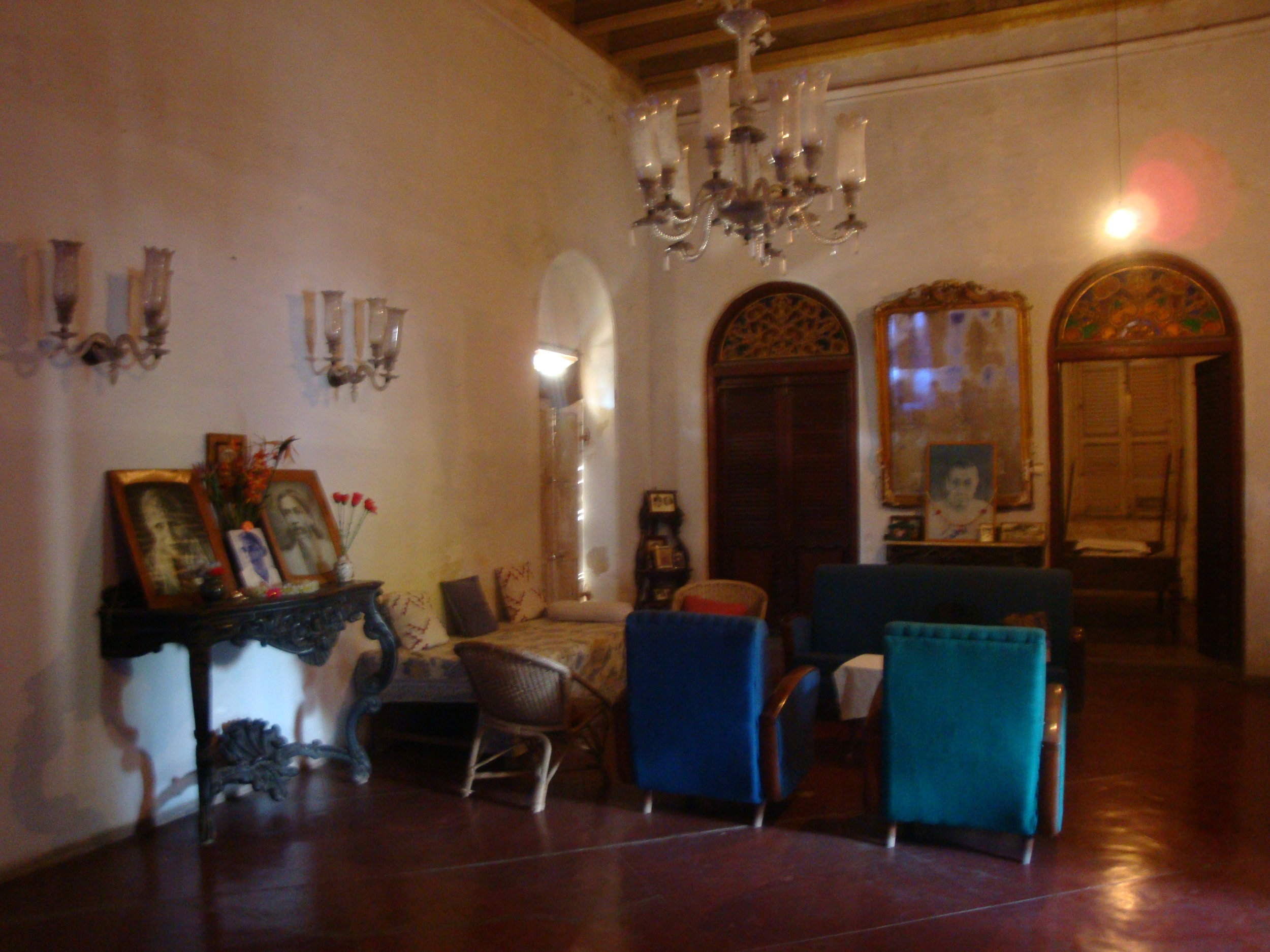

My favourite part of the place; The bathroom door is completely stained glass:
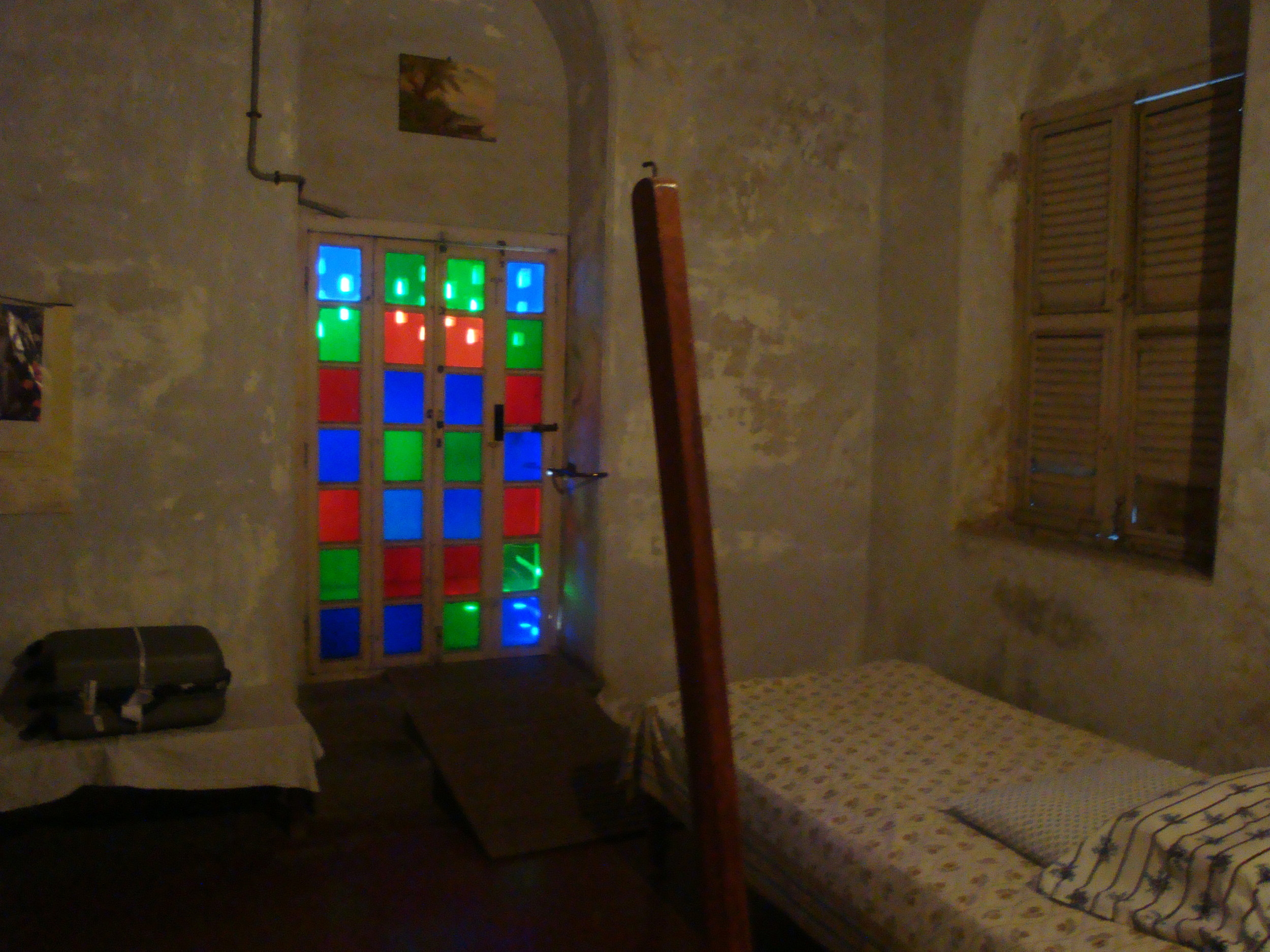
 Detail of the giant mirrors on both sides of the drawing room.
Detail of the giant mirrors on both sides of the drawing room.
The stained glass windows really add to the overall effect, and conflict nicely with the traditional, and brightly painted carved wood and absence of glass on the ground floor:

Only some of painted details remain, but these wooden columns were completely painted before falling into disrepair. Unfortunately, this part of the house has also not been maintained.
Here you can see an area where the bright colours are still visible and not completely faded:

Related Posts:
Quick Gun Murugan - Movie Review
Director: Shashanka Ghosh | Writer: Rajesh Devraj *
Okay, I've already heard many people say that the movie is not worth watching, and I completely disagree. That's what pushed me to write the review. Apparently, the movie has got a couple of bad reviews in the newspapers, I have no idea why, most of the time lots of terribly bad movies get good reviews, especially in TOI.
Quick Gun Murugan is Classic Slapstick Humour. It's well done, not too sexist, it has low brow and high brow cross-references and original, entertaining cultural references. Frankly, what more do you need in a light movie? A spoof of Tamil cinema, the movie reminds me of one of my all-time favourites, Kung Fu Hustle.
You're guaranteed to leave the theatre in a good mood, smiling: It's not too long either.
The theatre I went to in Chennai was not packed because it was a Sunday morning show, but almost everyone in the audience was in splits the entire time.
A warning note: It doesn't make sense to expect too much (its not THAT great), since its still rough at the edges, and not as polished as it could have been. And the reason I'm raving about it is the dearth of such movies in Indian cinema. As a film buff I still expect better.

Image via www.media.photobucket.com
The villain - Rice Plate Reddy:

Image via strawdogs.files.wordpress.com
The vamp/heroin Rambha:

Image via whatslatest.com
So you've seen some of the excellent and colourful cast, although I couldnt find a picture of one of my favourite villain characters - Rowdy MBA Rascal - I loved the insane amounts of case-taking of MBA's!!
Finally a found a pic of Rowdy MBA The Side Kick Villain:
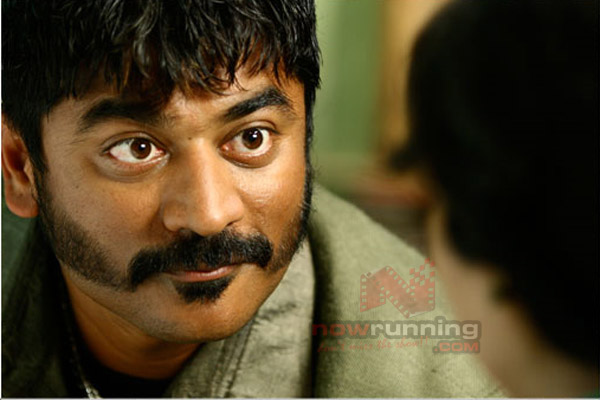
Image via nowrunning.com
The wiki tells us of the origin of the main character Quick Gun, who started off as a television promo on Channel [V] making phrases such as "Mind it" and "We are like this only" part of an iconic cultural identity. Quick Gun has come a long way from there.
Interestingly, the movie is in English, but it breaks into Tamil or Hindi whenever translation is not possible. In this way, even if it's in English, you never lose the Indian flavour at all. For example,
*SPOILERS AHEAD*
during a love song, he is singing in English and it sounds really ridiculous and funny, and then he switched to Tamil naturally, which is even funnier due to the subtitles that then appear, translating everything literally! This part was tricky, but well executed. Even the trilingual scenes in Mumbai, with English, Tamil and Hindi, switching from one language to another is handled naturally.
So indulge your light hearted side and watch this movie, and remember -
WE ARE LIKE THIS ONLY!
^_^
























